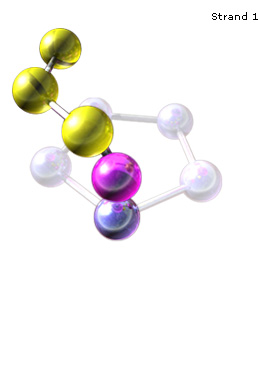|
|
 |
Transfer of Energy |
|
|

 |
 |
 |
The total energy of the universe is constant. Energy can be transferred by collisions in chemical and nuclear reactions by light waves and other radiation and in many other ways. However it can never be destroyed. As these transfers occur, the matter involved becomes steadily less ordered. Thus in energy transfers, the overall effect is that the energy is spread out uniformly. |
|
|
 |
All energy can be considered to be either kinetic energy, which is energy of motion;
potential energy, which depends on relative position; or energy contained by a field, such as electromagnetic waves. |
|
 |
Heat consists of random motion and the vibration of atoms, molecules, and ions. The
higher the temperature the greater the atomic or molecular motion. |
|
 |
Heat moves in predictable ways flowing from warmer objects to cooler ones, until both reach the same temperature. |
|
 |
Heat can be produced in many ways, such as burning or rubbing. Heat can move from one object to another by conduction. |
|
|
|
|